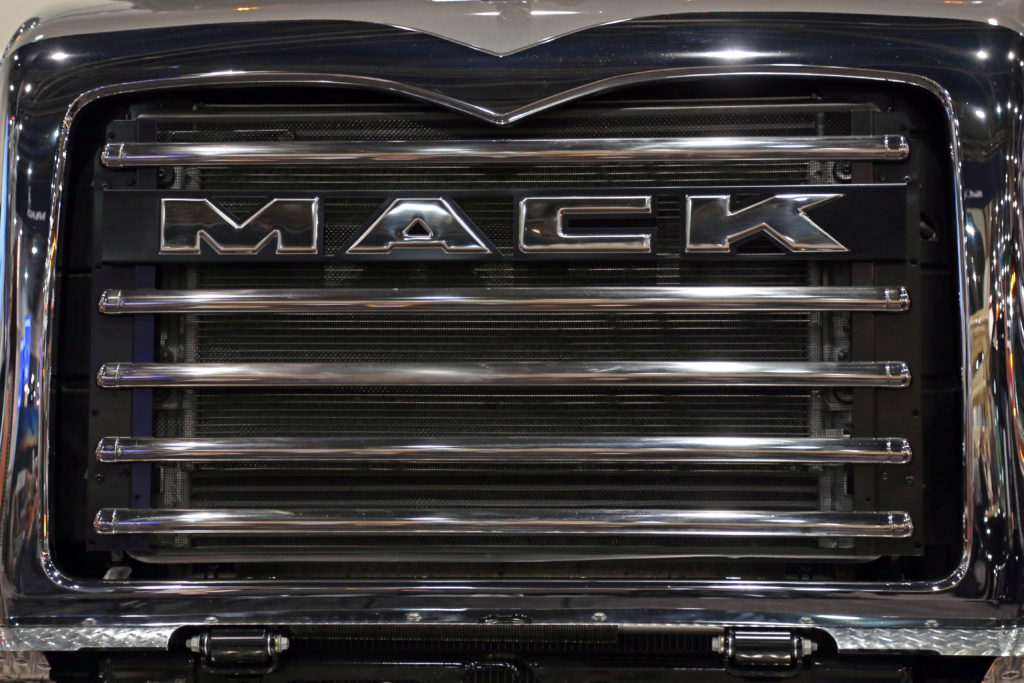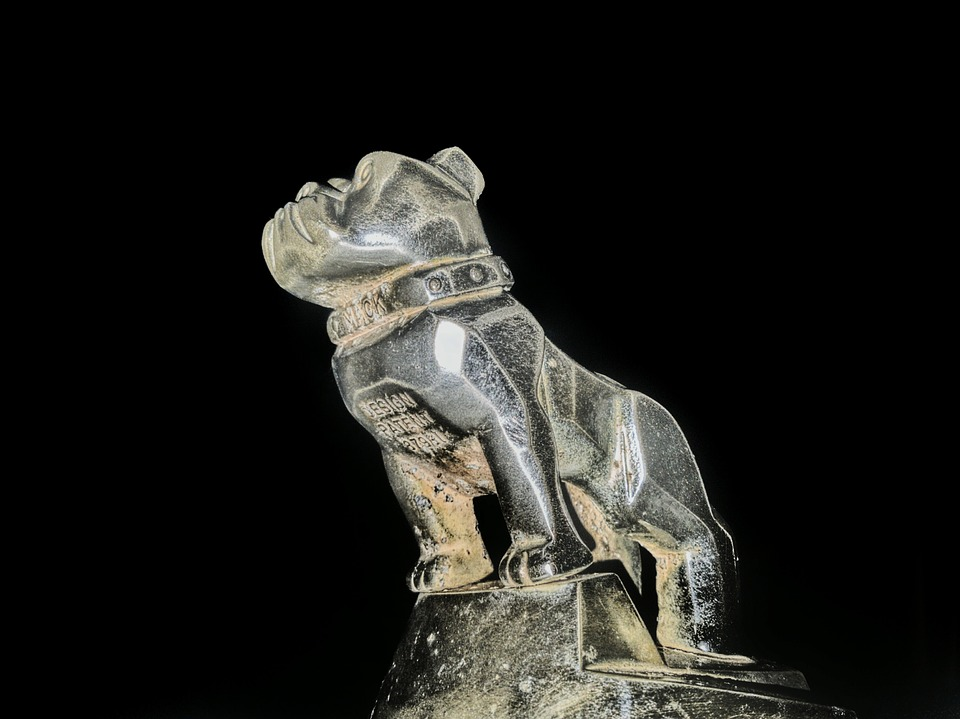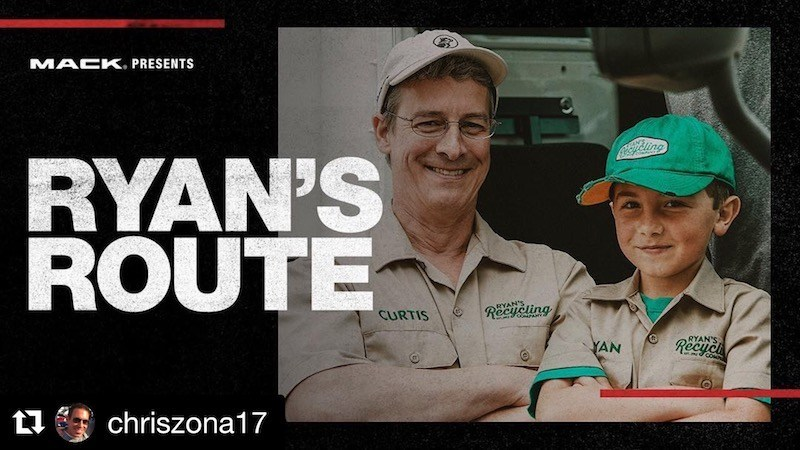
One of the cautionary tales for traditional brands in the Age of Digital has been the fear and delusion over new technology. At the Canadian Music Week conference last week in Toronto, a young broadcaster in the audience asked a panel of grizzled radio veterans why the radio industry has so often been reactive to tech, rather than grabbing it by the horns and finding ways to make it work.
Good question, and one that many people in legacy industries ask about their companies. Like the truck business.
And you cannot think of a more dyed-in-the-wool, American brand than Mack Trucks. Founded in 1900 in Brooklyn by John and Augustus Mack, this company is an American institution.
Interestingly, they’ve only been digitally active for a short time. Like many heritage companies, Mack has been slow to embrace technology, and the advantages and opportunities it brings in the 21st century.
Not anymore. Their VP/global marketing, John Walsh, recently talked about his company’s new approach to digital, covered in a story by The Drum by Ginger Conlon:
“We’re using every tool in the toolbox to amplify our message and sell more trucks.”
How’s that for a mission statement?
So, what can radio learn from an industrial centenarian – an old, we’ve-always-done-it-this-way brand that was born back when William McKinley was president?
It starts with recognizing opportunities, as the Mack brothers did back in Brooklyn when Walsh calls digital a “marketing nirvana,” acknowledging how the truck buying process has changed. While most buyers purchase Mack trucks from a dealership, their “online research” has already started long before they walk into the store. Thus for a brand like Mack, website assets and search fundamentals need  to be in place.
to be in place.
But Walsh is doing more than blocking and tacking. Mack has become a content marketer, serving up information and promotion, using a “central nervous system” – their email database – a topic we discussed in yesterday’s post.
The analogies to the radio business are obvious. Ironically, Walsh’s biggest obstacle is the sales department, often mired in word-0f-mouth rather than embracing the efficiency of a CRM system.
Using storytelling, Walsh is also building an arsenal of stories about people who spend a lot of time on the road. Mack isn’t just selling trucks – they are glorifying life on the highways and byways of America. 
Many radio stations simply don’t collect and utilize success or listener stories, a lost opportunity.
Partnering with NASCAR, Mack now has a dedicated video pro who produces a TV series called “Roadlife,” now in its second season. (You have to wonder at what point it will also become a podcast.)
Walsh sees opportunities for digital to work on both a B2B and B2C level – connecting with both businesses and customers. He calls it B2P – or business to people – a clever way of expressing the ways in which digital can be used on multiple levels to achieve success.
Another area where radio can take pointers from this old-line industrial icon is in the area of personalization. Walsh says every contact point between customer and company is being addressed to ensure a consistent experience across all platforms. Mack has become a big believer in CX – the customer experience – another area where radio is often lacking or Missing In Action.
Mack uses the Oracle Eloqua platform to ensure their data identifies customer interests, allowing their marketing team to use AI to service up more content that’s in their wheelhouse. Here’s a :30 spot that lays out Mack and Oracle’s integration:
But the story of Mack’s digital transformation isn’t just about swift, decisive, and strategic movement. Walsh’s enthusiasm for digital, and what it can do for his traditional company, is infectious – an attribute that’s become a prerequisite for legacy brands. He believes the more success he can demonstrate, the more support he’ll earn from the executive team at Mack.
Here’s how he frames it:
As we prove out this process over time, we’ll make a better argument for additional resources. And when we do, we’ll blow this thing up. There’s no reason you can’t be a 119-year-old brand, maintain your core from the past, and be a tech-forward company.
So, it comes down to 8 key lessons from Mack Trucks, an unusual teacher. But like radio, Mack’s been around for over a century – an industry and a company that needs to adapt in order to thrive:
- It’s about X’s and O’s – The basic need to be in place – the website, search – all the things many radio companies glaze over.
- Embrace content marketing – This is how the email database, social media, and other sharing assets can amplify the brand.
- Build success stories – When you’ve been around a long time, you’ve (hopefully) amassed some big wins. So, build on them and share them.
- Use storytelling – Mack’s doing it with video. Others are using podcasts. Whatever the distribution outlet, storytelling builds audiences and advertisers.
- Partner wisely – Mack’s collaboration with NASCAR is a perfect fit. Many radio companies are thinking along these lines – local clusters should, too.
- Think B2P – This is a great takeaway for radio. While managers must consider advertisers (B2B) and listeners (B2C), the concept of connecting with people is a universal.
- It’s about personalization – Again, this is where the database comes into play, identifying your audience’s tastes, preferences, and purchasing habits.
- Get pumped about digital – Perhaps Mack’s biggest asset isn’t its history or its budget – it’s Walsh, a passion player on behalf of his company and the digital opportunities lie ahead.
In many ways, Walsh’s passion echoes the company mascot, the bulldog, “signifying Mack’s tenacity in getting the job done, no matter how tough the task.”
On the digital highway, Mack is definitely in-gear.
- Can Radio Win “The Last Touch/First Touch Challenge?” - April 4, 2025
- How Will Radio Fare In The Battle For The Fourth Screen? - April 3, 2025
- Like A Pair Of Old Jeans - April 2, 2025




Radio sales easily increase when client success stories quantify client sales figures directly attributable to radio.
The systems, strategies, tactics and tools exist for radio to measure radio-attributable advertiser sales results on a daily, weekly, monthly or annual basis – for any radio station’s advertisers. Using a number of them, it beats me how our radio industry continues not to respond to our advertisers’ requests for measurement.
It results in more advertiser revenue; and for radio, more premium rate, 52 week sales and profits per hour of prospecting, preparing, presenting, closing and servicing.
Via replicable processes producing customized, consumer-needs-focused advertiser strategies, tactics and tools, any radio branding and sales activation campaigns can capture our advertisers’ prospects’ contact info.
Then, these ultimate consumers’ interests can be further identified and fed as they’re continuing to be marketed along their consumer journey by radio, email, other digital, direct mail, etc., until the prospect says “Put a fork in me, I’m done, and ready to buy”.
That our clients spend more on advertising than they invest in their retirement funds is telling. As they’d fire their financial planner if they didn’t get a statement each month showing how much they made, why expect any less from a larger investment in radio?
How much of a competitive advantage do you have when you say to the client “How much money did you make last week / last month / last quarter / last year with ? With me, you’ll know. We’re good to start next Monday or the following Monday – how soon do you want to see the results?”.
Andy, there’s the A-word again. Our post earlier this week about email database marketing is another example of how radio could make a more direct connection between messaging/advertising/results. Thanks for taking the time to read our post and comment.
Fred, personalized, advertiser-to-prospect email is the far-from-fully-monetized gold that our clients have yet to tap; and what can be the most valuable, hand-in-hand tool that radio can greatly monetize for our clients.
About 1-2-3-4% of any industry’s prospects can be classified as “Now Buyers”, on whom the vast majority of advertising dollars are focused.
Far greater riches are found when radio’s branding and sales activation commercials also capture the contact info of these people by simultaneously appealing to the 96% of “Future Buyers”.
Future Buyers and Now Buyers have almost the same buying criteria. The critical difference is their timing of purchase intent. That timing can be accelerated by the no cost/low cost, no risk/low risk decision-facilitating information or decision-facilitating experience that the prospect requires to have the confidence/have the feeling of control to take the next step in their buyer journey.
We can generate additional, high margin digital services revenue by coordinating that for our advertisers (better than they can for themselves). When we shape, schedule and send advertisers’ messages, we can take credit for the capture, curation and conversion of more prospects into customers.
This way, the client sales dollars that we can justifiably attribute to radio are added to, and far greater, than the 1-2-3-4% of Now Buyers – both groups of whose purchases are quantifiable and attributable by this and other systems/strategies/tools – by day, by week, by month, by year.
That said, what you and Paul do for your clients and readers is greatly appreciated. You further our understanding of the landscape, the opportunities in our industry, and what can be done to realize them.
As always, great food for thought.
I think one important thing to keep in mind that the digital advocates often set aside in their all things digital/streaming optimism is how difficult it can be for us independent owners.
I’m far from a luddite or in denial that digital is an important aspect of what we do, but when it comes to things like expanding streaming, podcasting, etc. it’s become an issue of time & money.
The recording industry treats radio like the enemy. In the time I devote to programming my station (and promoting independent & regional music as a part of my regular programming) I’m also expected to be on platforms that actually lose money.
I’m a music focused station that has to avoid podcasting 99% of programming related to music because I can’t use any of that music in the context of the podcast. I’m supposed to promote and encourage listeners to stream my station to grow my reach but I LOSE money on streaming. The people that want me to promote their music (the industry – not the artists, who are usually understanding) create such a myriad of rules, reporting requirements and administrative complexity that it saps my energy and resources as an independent broadcaster.
To see more of us “embrace” digital, and find it worth our time and investment, then stop treating radio as the enemy or as greedy. Make the rules simple, make compliance easy, and make it affordable. Some of us aren’t even against your proposed “performance royalty” but you have to be willing to work with us in return.
The “holy war” between the radio and music industries that’s broken out is debilitating for both – and yet, it rages on. You are correct, Andy, that each could exponentially help each other during these uncertain times. Ass for your independent station(s), it is essential you pick and choose the most opportune digital platforms – ones where you audience is, where they want to experience your brand, and that you can eventually monetize. That’s a tall order, to be sure. Thanks for the note.